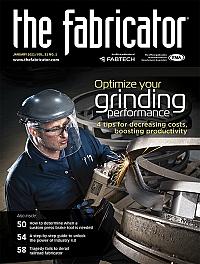Product Manager for Nonwoven Abrasives
- FMA
- The Fabricator
- FABTECH
- Canadian Metalworking
Categories
- Additive Manufacturing
- Aluminum Welding
- Arc Welding
- Assembly and Joining
- Automation and Robotics
- Bending and Forming
- Consumables
- Cutting and Weld Prep
- Electric Vehicles
- En Español
- Finishing
- Hydroforming
- Laser Cutting
- Laser Welding
- Machining
- Manufacturing Software
- Materials Handling
- Metals/Materials
- Oxyfuel Cutting
- Plasma Cutting
- Power Tools
- Punching and Other Holemaking
- Roll Forming
- Safety
- Sawing
- Shearing
- Shop Management
- Testing and Measuring
- Tube and Pipe Fabrication
- Tube and Pipe Production
- Waterjet Cutting
Industry Directory
Webcasts
Podcasts
FAB 40
Advertise
Subscribe
Account Login
Search
4 best practices for fabricators using fiber discs
How fabricators can decrease grinding costs, boost productivity, and increase shop safety
- By Jeremy Spencer
- February 19, 2021
- Article
- Finishing
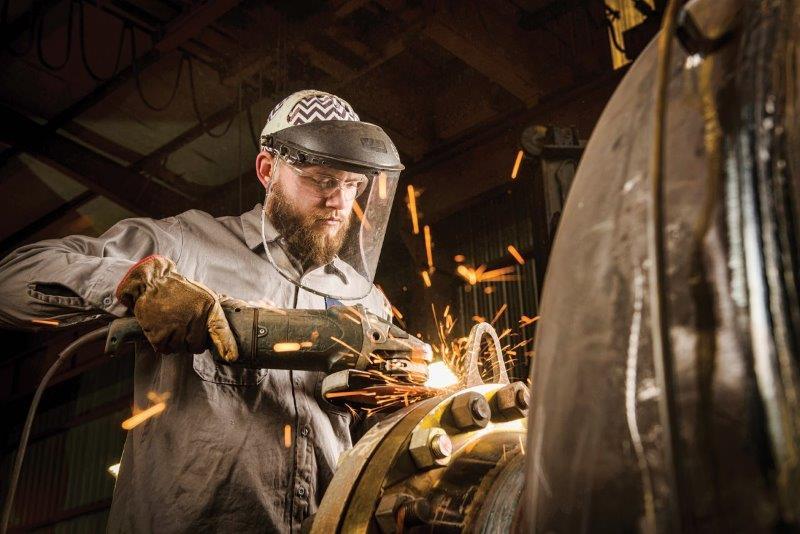
Applying the right downforce pressure is key to maximizing fiber disc life. Too little downforce pressure results in capping, and too much force does not remove materials as effectively as the correct force. Apply enough force so that the grain can fracture, and then let the abrasive do the work. Images provided by Norton Saint-Gobain Abrasives
Questions that metal fabricators wonder about are whether they are fully utilizing their fiber discs and if the operators are changing discs too soon. Those questions can be answered by doing a little dumpster-diving. This might seem odd – no one likes to dig through trash – but examining a few discarded discs can reveal how efficiently those discs were used and ascertain if they still have useful life.
Replacing discs that still have available life creates waste, thereby increasing part cost; on the other hand, and more important, operators spending excessive amounts of time grinding because the discs are worn increases labor costs.
Following best practices helps decrease grinding costs, increase safety, and boost productivity.
1. Apply Correct Downforce Pressure
Understanding and applying the right downforce pressure is key to maximizing fiber disc life. Downforce pressure, measured in pounds per square inch (PSI), varies with changes in the width and height of the area being ground, as well as the size and surface contact area of the disc. It is important for the operator to take cues from the machine while grinding to prevent overloading.
In one fab shop that fabricates carbon steel supports for concrete structures, three different operators all doing the same type of finishing job took three different approaches to smoothing welds for the downstream operation. All operators were using 5-in. right-angle grinders running at 11,000 RPM with a medium air-cooled backup pad. They used 36-grit, 4-1/2- by 7/8-in. fiber discs.
The exact force each operator applied was identified using a load cell.
The first operator’s downforce pressure averaged 9 PSI across a 3/8-in. weld. The operator used the handle that comes standard with a right-angle grinder to help maintain pressure and control. The operator removed 81 grams in 2:45 minutes. The disc was evenly worn and still had plenty of life left to continue working (see Figure 1).
The second operator’s downforce pressure averaged 6.5 PSI across the same type of weld. This operator preferred not to use the standard handle on the side and removed it. This is a common practice for many operators in the field, but it reduces control and creates greater force on the operator’s hand and wrist. This operator removed 55 grams from the part in 2:24 minutes.
Figure 2 shows that the metal fines started to attach to the grain along the edges. This is known as capping. Capping gets its name because individual grains get a metal “helmet.” This hinders the removal effects that ceramic and other types of precision grains are designed to have. The grain is intended to become dull, then fracture. The fracture exposes new, sharp tips so that the disc will keep cutting and reduce heat during grinding.
This operator did not apply enough downforce pressure to allow the grain to fracture completely; therefore, the heat caused the metal to adhere to the grain.
The third employee came over from a different area in the plant where his physical strength was an asset. He applied an average of 13.5 lbs. of downforce pressure and removed 64 grams in 1:04 minutes. Like the second operator, this operator preferred not to use the side handle, instead using his free hand to push on the back side of the head unit to apply more pressure. This practice can be dangerous because it overloads the grinder, and there is no control if the disc slips off the workpiece during grinding.
Figure 3 clearly shows that excessive force was applied. Excessive force damages the abrasive disc’s grain structure and even depletes the grain in some areas. There is still life left on the disc, but excessive force can damage not only the disc, but also the backup pad and grinder, creating a safety hazard.
Fiber discs are meant to remove a great deal of metal without the vibration, noise, and unforgiving nature of grinding wheels. However, there are high and low limits of downforce pressure to get the maximum benefits of fiber discs. There is no need to apply extreme forces to remove metal. Apply enough force so that the grain can fracture, and then let the abrasive do the work for you from there.
Most fabricators do not own scales, load cells, or have a test to determine if a disc is completely used; however, if the disc is evenly worn, leaves grinding burn on areas, and emits a blue haze, those are signs to change out the disc to prevent microfractures.
2. Use the Appropriate Grinder
It is important to match the grinder or sander with the job requirement. Abrading heavy amounts of material from a workpiece may require a grinder.
Grinders with a low amperage rating are intended for small projects that require little grinding time. Grinders rated at 6.5 amps will not last if the amount of force required to break down the grain is 9 PSI. A 10-amp grinder is required.
Using the wrong grinder/sander, using the incorrect backup pad, jamming or catching the disc on the workpiece, and operating at excessive speeds are all leading causes of disc breakages and must be avoided.
3. Follow Safety Protocols
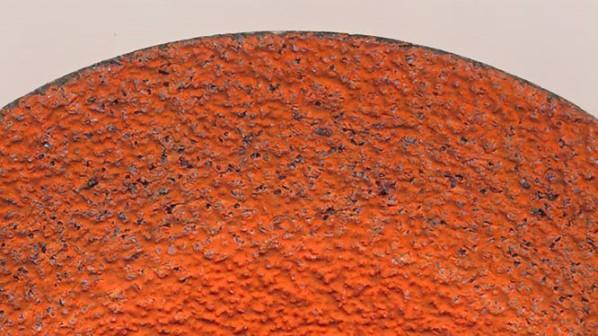
Figure 1: [Example #1.jpg] 9.5 PSI of force was applied for 2:45 minutes and removed 81 grams. Notice the even grain along the cutting edge. This indicates that the proper force and angle were used.
In addition to applying downforce pressure most efficiently and using the right grinder, a range of best safety practices, when followed, will maximize productivity in your grinding operation as well as ensure operator safety.
Coated abrasive fiber discs have an excellent safety record with few reported disc breakages and personal injuries. However, breakages and personal injuries can and should be prevented. As with most accidents, operator error is a major factor. Following established safety rules will reduce the probability of such occurrences.
Review the following tips on proper adhesive disc use, grinder operation, and proper personal protective equipment (PPE). If you comply with the checklist below and use the greatest safety tool of all – common sense – you can eliminate some potential safety hazards to prevent disc breakages and injuries:
Adhesive Discs
___ Inspect the backup pad on the machine for concentricity. Make sure it is the right shape and free of irregularities such as fractures (cracks), excessive wear, nicks, and cuts at the edges or in the center hole. Never use a disc without a backup pad.
___ Match the coated abrasive disc and backup pad to the machine. Never use a coated abrasive fiber disc without the correct-sized backup pad. The maximum disc overhang is ¼ in. Never use a 9-in. coated abrasive disc or backup pad on a 5-in. sander.
___ Inspect the coated abrasive disc for nicks, cuts, tears, or other visible damage, and if it exists, discard it. Only use a disc that fully contacts the backup pad and is not warped.
___ Never alter the size or shape of an abrasive disc or backup pad.
___ Never use another disc as a backup pad.
Review and follow all of the machine and fiber disc manufacturer's recommendations. Do not run a coated abrasive disc on an unfamiliar machine without obtaining and following machine instructions.
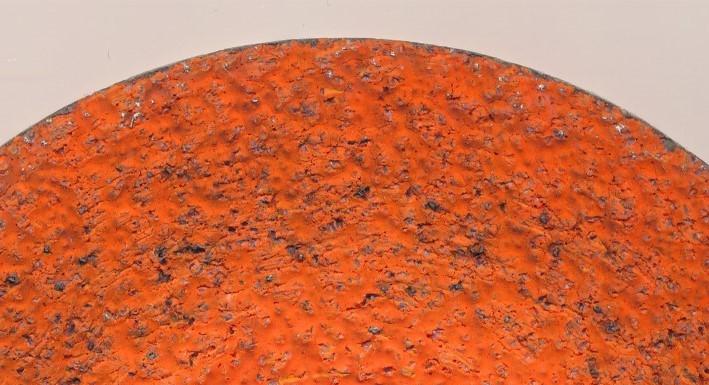
Figure 2: [Example #2.jpg] 6.5 PSI of force was applied for 2:24 minutes, removing 55 grams. Notice the gleaming areas along the edges. Because of the lower force used, metal fines cap the grain, also known as metal capping.
Grinder Equipment
___ Before mounting a disc for any type of machine repair, disconnect the grinder/sander from its power source to eliminate the possibility of the machine accidentally starting during mounting or repairing operations.
___ Check the sander/grinder spindle for runout (wobble). If there is any runout, repair or replace the spindle.
___ Select the proper grinder or sander for the job. Using a grinder for light sanding or blending may result in personal injury. Conversely, a tool that is too small or underpowered can result in safety problems because forcing the machine and abrasive disc can cause the disc to slip, snag, or break.
___ Never exceed the speed rating (marked in RPM) of a back-up pad.
___ Check the disc retainer nut for thread wear. Also check for a snug fit and full three-point contact except when using quick-change or nonwrench systems.
___ Use the proper disc-mounting equipment. Never use adhesives to fasten discs to backup pads.
___ If a grinder is used or if the sander is equipped with a guard, you must use it. Guards prevent injuries. Never remove a guard provided by the machine manufacturer.
___ Many air-driven sanders, such as pistol grip air sanders, are ungoverned machines. Therefore, as with many pneumatic tools, you must use air regulators at each workstation. The speed of the sander is determined by the air pressure provided to the tool. If the machine is designed to operate at 20,000 RPM at 90 PSIG, do not exceed that air pressure; the speed of the machine can go up exponentially. Never mount a bonded grinding wheel on a pistol-grip air sander!
___ If you selected an electrical power tool, make sure you use the correct voltage. Never attach a sander/grinder designed for 110 volts into a 220-voltage power source. Take all normal electrical tool precautions.
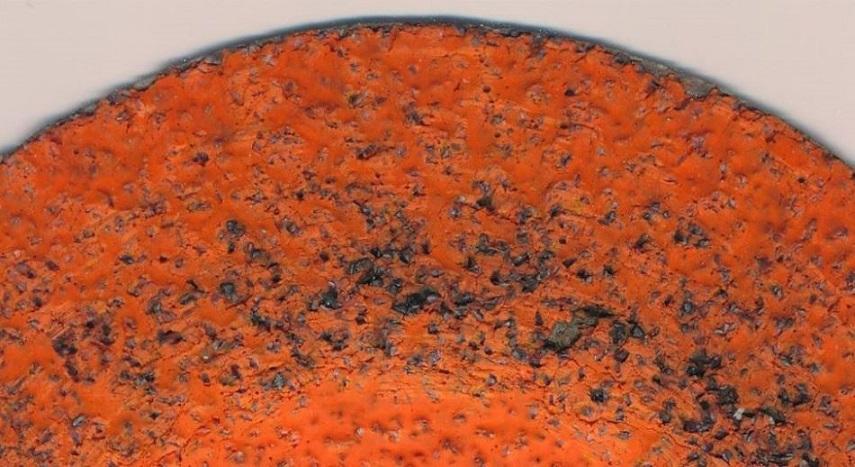
Figure 3 [Example #3.jpg] 13.5 lbs. of force was applied for 1:04 minutes and 64 grams were removed. Grain shedding is apparent from the excessive force, reducing life and causing wear to the machine and operator fatigue.
___ Check electrical cords and air hoses for cracks and worn areas regularly.
Review any special grinding and handling instructions with the manufacturer of the work materials. If you are grinding combustible or other hazardous materials, look for instructions on special fire containment equipment, extinguishing materials, and other special requirements.
Personal Protective Equipment
PPE is an important safeguard for operators and bystanders of coated abrasive operations. Using the proper safety equipment can save eyes, limbs, and hearing and help prevent future respiratory problems. Always use the proper PPE list below:
- Eye protection and faceshield (worn together)
- Gloves
- Safety shoes or boots
- Arm guards
- Apron
- Long pants
- Approved mask or other respiratory protection appropriate for materials being abraded or ground
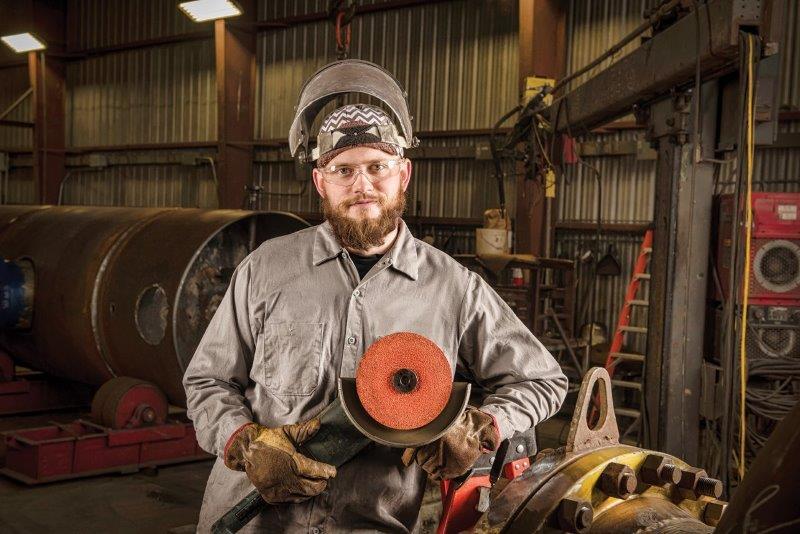
It is important to match the grinder or sander with the job requirement. Using the wrong grinder/sander, using the incorrect backup pad, jamming or catching the disc on the workpiece, and operating at excessive speeds are all leading causes of disc breakages.
- Hearing protection when noise levels exceed the established threshold levels
4. Use Good Fiber Disc Storage Protocols
Humidity and temperature are the two very important factors influencing coated abrasive performance. Backings and adhesives are sensitive to temperature and moisture of their surroundings. Improper or inadequate storage can damage discs, rendering them ineffective and making them unsafe.
Excessive humidity may cause the fiber backing of a disc to absorb moisture and curl up (convex shape like a taco shell) called cupping. Discs that are cupped or curled up should never be used. A disc in this condition may snag on the workpiece, causing it to break. Excessive moisture could also soften the adhesive bond, causing the disc to shed large amounts of abrasive grains.
Excessive dryness may cause the disc to curl or arch down (concave shape) and become brittle and lose flexibility.
Cold temperatures will cause a cold set condition. Consequently, these products should be stored at room temperature.
To keep your disc flat and safe, follow the manufacturer's storage instructions.
Store abrasive discs at 40% to 50% relative humidity and 60 to 80 degrees F (15 to 29 degrees C). Protect discs from exposure to water or other fluids and solvents. Coated abrasive discs should be stored at least 4 in. above the surface of concrete floors; away from open windows; out of direct sunlight; and away from heat sources such as radiators, steam pipes, and air conditioner exhaust vents.
Storing coated abrasive discs in their original packaging will help protect them. If packaging is received damaged, the product inside should not be used. Return any damaged product to its manufacturer. Never use hooks when handling or transporting coated abrasive containers.
Rotate stock, using it on a first-in, first-out basis.
About the Author
Jeremy Spencer
One New Bond St.
Worcester, MA 01606
254-918-6364
subscribe now

The Fabricator is North America's leading magazine for the metal forming and fabricating industry. The magazine delivers the news, technical articles, and case histories that enable fabricators to do their jobs more efficiently. The Fabricator has served the industry since 1970.
start your free subscription- Stay connected from anywhere

Easily access valuable industry resources now with full access to the digital edition of The Fabricator.

Easily access valuable industry resources now with full access to the digital edition of The Welder.

Easily access valuable industry resources now with full access to the digital edition of The Tube and Pipe Journal.
- Podcasting
- Podcast:
- The Fabricator Podcast
- Published:
- 04/16/2024
- Running Time:
- 63:29
In this episode of The Fabricator Podcast, Caleb Chamberlain, co-founder and CEO of OSH Cut, discusses his company’s...
- Trending Articles
Tips for creating sheet metal tubes with perforations

JM Steel triples capacity for solar energy projects at Pennsylvania facility

Are two heads better than one in fiber laser cutting?

Supporting the metal fabricating industry through FMA

Omco Solar opens second Alabama manufacturing facility

- Industry Events
16th Annual Safety Conference
- April 30 - May 1, 2024
- Elgin,
Pipe and Tube Conference
- May 21 - 22, 2024
- Omaha, NE
World-Class Roll Forming Workshop
- June 5 - 6, 2024
- Louisville, KY
Advanced Laser Application Workshop
- June 25 - 27, 2024
- Novi, MI

























